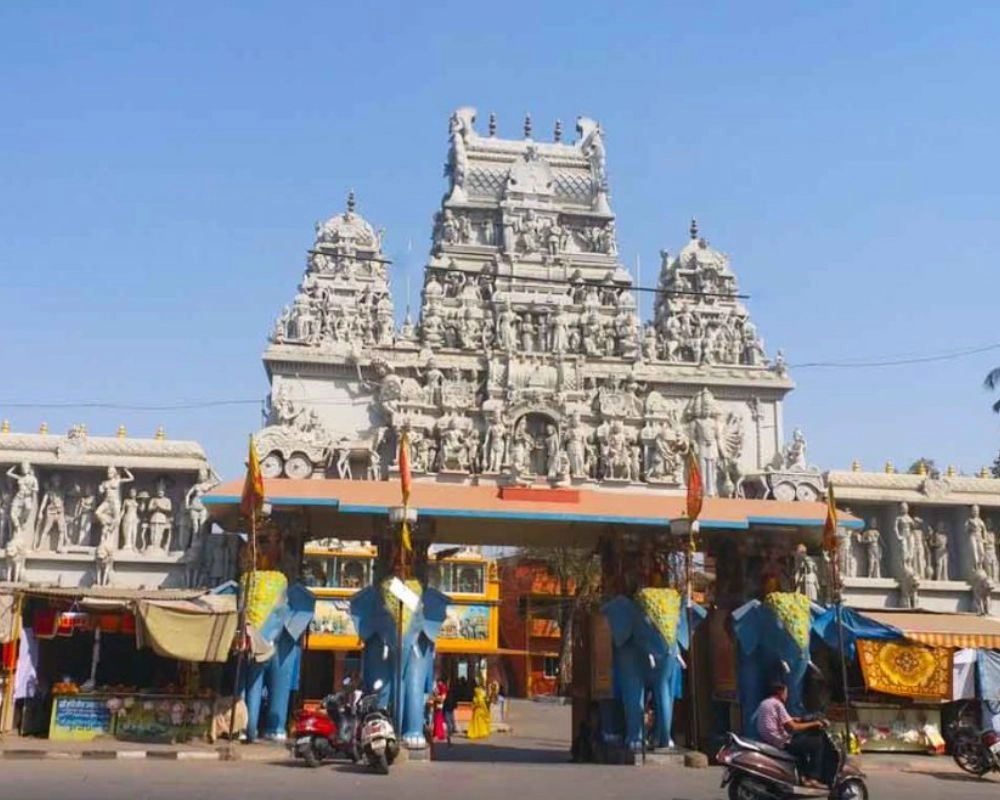Kanch Temple
Nestled in the heart of Indore, Madhya Pradesh, the Kanch Mandir (meaning Glass Temple) is one of th...

Situated in the spiritual city of Ujjain, Madhya Pradesh, the Annapurna Temple stands as a beautiful symbol of divine nourishment, compassion, and abundance. Dedicated to Goddess Annapurna, the deity of food and sustenance, this temple is not only a spiritual retreat but also a place where service to humanity meets devotion.
Goddess Annapurna Devi is considered an incarnation of Goddess Parvati, the consort of Lord Shiva. Her name literally means “giver of food” (Anna = food, Purna = complete/abundance). She is worshipped as the Goddess of nourishment, believed to ensure that no one who seeks her blessings remains hungry.
She represents material and spiritual fulfillment, and her idol is often shown holding a bowl of grains and a ladle, signifying generosity and care.
Location: Near Ramghat, Ujjain, Madhya Pradesh
How to Reach: Easily accessible by road, about 3 km from the Ujjain Railway Station. Local autos and taxis are available.
The temple is close to the famous Mahakaleshwar Jyotirlinga, making it a key stop for pilgrims.
The Annapurna Temple in Ujjain showcases classic Hindu temple architecture with beautifully carved pillars, a grand entrance, and intricate idols. The temple complex is serene, clean, and spiritually uplifting. The idol of Maa Annapurna is adorned with ornaments, garlands, and bright red attire, symbolizing her vibrant and nurturing form.
A unique feature of the temple is its community kitchen, where food is prepared and distributed to the needy — staying true to the essence of Annapurna Devi.
Devotees worship Annapurna Mata for food security, abundance, health, and peace.
Many offer grains, food, or alms at the temple as a gesture of gratitude.
It is believed that offering annadaan (food donation) here grants immense punya (spiritual merit).
Farmers, householders, and even businessmen seek her blessings for prosperity and stability.
The temple becomes especially vibrant during:
Annapurna Jayanti (celebrated in Margashirsha month): The appearance day of the Goddess, marked with special pujas, annadaan, and bhajans.
Navratri: Nine nights of divine worship, with decorations, chanting, and free meals served to thousands.
Deepavali (Diwali): The temple is beautifully lit, symbolizing light, wealth, and nourishment.
Many visitors report a feeling of completeness and satisfaction, both spiritually and emotionally, after visiting the temple.
The daily aartis and bhog offerings create a serene and sacred atmosphere.
Devotees often bring grains, fruits, or sweets as offerings, which are later used for annadaan.
One of the most noble aspects of the Annapurna Temple is its free meal service. Every day, food is prepared and served to hundreds of pilgrims and underprivileged individuals. This practice reflects the true message of the Goddess — no one should go hungry in her presence.
Ideal Months: October to March (pleasant weather)
Auspicious Days: Fridays, Full Moon days, Annapurna Jayanti, and during Navratri
Early morning or evening visits are ideal to witness peaceful aartis and spiritual ambiance.
Nestled in the heart of Indore, Madhya Pradesh, the Kanch Mandir (meaning Glass Temple) is one of th...
Located in the heart of Ujjain, Madhya Pradesh, the 24 Avtar Temple is a sacred site that beautifull...
Situated in the vibrant city of Indore, Madhya Pradesh, the Bada Ganpati Temple is not just a religi...
Among the most revered temples in Madhya Pradesh, the Khajrana Ganesh Temple in Indore holds a speci...
